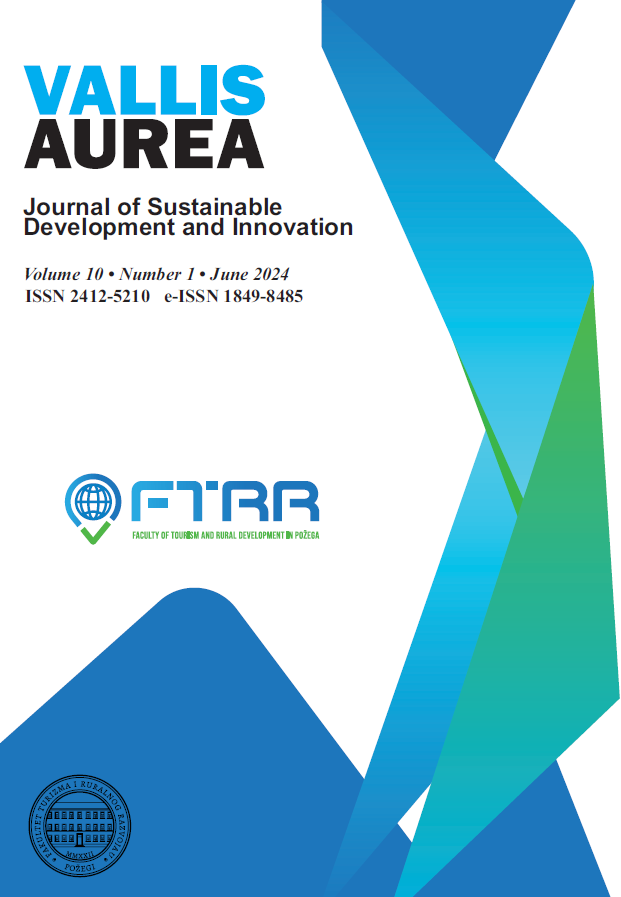The Socio-Economic and Ecological Impacts of Water Hyacinth Proliferation in water bodies: A Case from Greater Kochi area in South India
DOI:
https://doi.org/10.62598/JVA.10.1.2.2Keywords:
Water hyacinth, social and ecological effects, alternative uses, heavy metalAbstract
Purpose of this study is to critically analyze the socio-ecological impact of water hyacinth on the water bodies passing through 7 wards of the Thrippunithura Municipality in the Ernakulam district of the state of Kerala, India, by checking the quality of water and conducting surveys among the people.
Research Design The study employs a combination of exploratory and descriptive research approaches. Purposive sampling targets individuals directly impacted by water hyacinth proliferation.
Methodology Data collection involved direct surveys using a structured questionnaire and water samples from selected regions.
Results: reveal significant socio-economic ramifications of water hyacinth proliferation, particularly impacting fishing communities. Challenges include job losses, diminished access to fishing grounds, navigational hindrances, reduced catches, and fish scarcity. Ecologically, water quality parameters show notable disparities between heavily-infested and less-infested areas, highlighting the weed's impact on aquatic ecosystems. The phytoremediation potential of water hyacinth was also explored, revealing its ability to accumulate heavy metals such as chromium, cadmium, copper, zinc, lead, iron, and arsenic.
Originality of Research This study records the socio-ecological impact of water hyacinths on the communities and environment, particularly the water bodies, of the Greater Cochin area, Kerala, India.
References
1. Dersseh, M. G., Steenhuis, T. S., Kibret, A. A., Eneyew, B. M., Kebedew, M. G., Zimale, F. A., Worqlul, A. W., Moges, M. A., Abebe, W. B., Mhiret, D. A., Melesse, A. M., & Tilahun, S. A. (2022, March 10). ‘Water Quality Characteristics of a Water Hyacinth Infested Tropical Highland Lake: Lake Tana, Ethiopia’. Frontiers in Water. https://doi.org/10.3389/frwa.2022.774710
2. DiTomaso, JM; Kyser, GB; Oneto, SR; Wilson, RG; Orloff, SB; Anderson, LW; Wright, SD; Roncoroni, JA; Miller, TL; Prather, TS; Ransom, C; Beck, KG; Duncan, C; Wilson, KA; Mann, JJ (2013). Weed control in natural areas in the Western United States. Weed Research and Information Center. University of California, 544 pp. https://www.ajol.info/index.php/jasem
3. Endgaw, F. (2021, February 15). ‘Socio-ecological impacts of water hyacinth, Eichhornia crassipes (MART.) in Lake Tana, Gulf of Gorgora, Ethiopia.’ Journal of Applied Sciences and Environmental Management, 24(12), 2017–2025. https://doi.org/10.4314/jasem.v24i12.2
4. Epstein, P. (1998). Nairobi Weeds bring disease to the east African waterways. The Lancet, 351(9102), 577. https://doi.org/10.1016/s0140-6736(05)78570-6
5. Ekong, Emem Archibong and Mary Ekanim (2023, February 20). ‘Production of Biogas Using Water Waste Products (Water Hyacinth and Cow Dung)’. Biomedical Science and Clinical Research, 2(1). https://doi.org/10.33140/bscr.02.01.10
6. Gupta, A. K., & Yadav, D. (2020). ‘BIOLOGICAL CONTROL OF WATER HYACINTH.’ Environmental contaminants reviews, 3(1), 37-39.. https://doi.org/10.26480/ecr.01.2020.37.39
7. Maulidyna, A., Alicia, F., Agustin, H. N., Dewi, I. R., Nurhidayah, I., Dewangga, A., Kusumaningrum, L., Nugroho, G. D., Jumari, J., & Setyawan, A. D. (2021, June 19). ‘Review: Economic impacts of the invasive species water hyacinth (Eichhornia crassipes): Case study of Rawapening Lake, Central Java, Indonesia’. International Journal of Bonorowo Wetlands, 11(1). https://doi.org/10.13057/bonorowo/w110103
8. PN, A. M. L., & Madhu, G. (2011). ‘Removal of heavy metals from waste water using water hyacinth.’ International Journal on transportation and Urban Development, 1(1), 48. https://www.researchgate.net/profile/G-Madhu/publication/291832116_Removal_of_heavy_metals_from_waste_water_using_water_hyacinth/links/56a7175708ae0fd8b3fd346f/Removal-of-heavy-metals-from-waste-water-using-water-hyacinth.pdf
9. Pratama, J. H., Amalia, A., Rohmah, R. L., & Saraswati, T. E. (2020, January 1). ‘The extraction of cellulose powder of water hyacinth (Eichhornia crassipes) as reinforcing agents in bioplastic.’ AIP Conference Proceedings. https://doi.org/10.1063/5.0003804
Downloads
Published
Issue
Section
License
Copyright (c) 2024 Vallis Aurea

This work is licensed under a Creative Commons Attribution-NonCommercial-NoDerivatives 4.0 International License.
Authors of papers for publishing in the journal agree under a Creative Commons Attribution-NonCommercial-NoDerivatives 4.0 International License.https://creativecommons.org/licenses/by-nc-nd/4.0/







